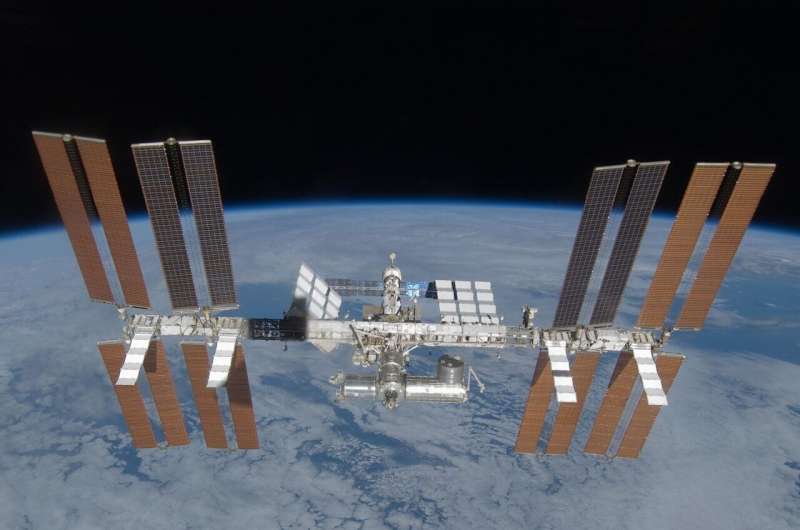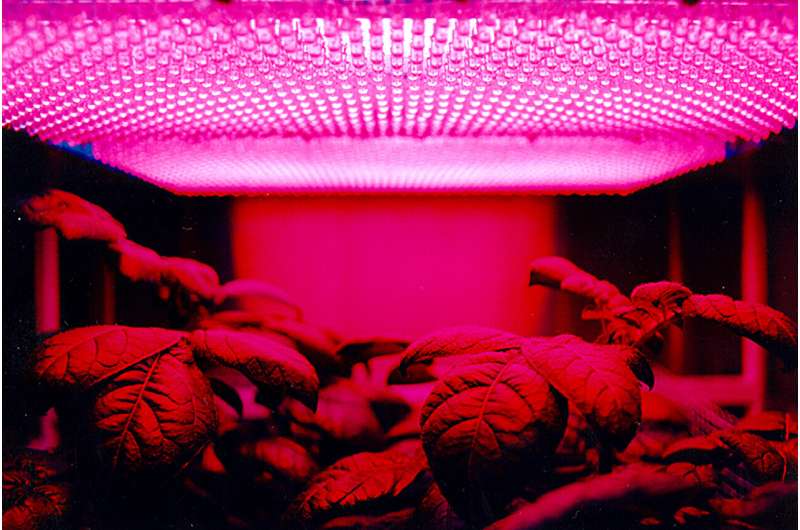Comsat Architects and Ubotica Technologies Unite to Deploy AI in Orbit
Wednesday, 13 March 2024 19:49 In a groundbreaking move, Comsat Architects, renowned for its pioneering work in space communications, has teamed up with Ubotica Technologies, leaders in autonomous AI satellite technology. This collaboration marks a significant step forward in the integration of Artificial Intelligence (AI) into space-based communication and Earth observation systems aboard small satellites in low Earth orbit,
In a groundbreaking move, Comsat Architects, renowned for its pioneering work in space communications, has teamed up with Ubotica Technologies, leaders in autonomous AI satellite technology. This collaboration marks a significant step forward in the integration of Artificial Intelligence (AI) into space-based communication and Earth observation systems aboard small satellites in low Earth orbit, Cosco Shipping Upgrades Fleet Safety with Iridium's Advanced GMDSS System
Wednesday, 13 March 2024 19:49 Iridium Communications Inc. (NASDAQ: IRDM) has reported that Cosco Shipping (CSSC), the leading commercial fleet globally with 1,417 vessels, has initiated the integration of Iridium Global Maritime Distress and Safety System (GMDSS) terminals across its ships. The installation of the Lars Thrane LT-3100S terminal on the vessel Cosco Tengfei signifies CSSC's commitment to the paramount safety of
Iridium Communications Inc. (NASDAQ: IRDM) has reported that Cosco Shipping (CSSC), the leading commercial fleet globally with 1,417 vessels, has initiated the integration of Iridium Global Maritime Distress and Safety System (GMDSS) terminals across its ships. The installation of the Lars Thrane LT-3100S terminal on the vessel Cosco Tengfei signifies CSSC's commitment to the paramount safety of ESA Awards Atheras Analytics Contract for Next-Gen Satellite Constellation Ground Software Development
Wednesday, 13 March 2024 19:49 The European Space Agency (ESA) has chosen Atheras Analytics SAS, based in Paris, for a significant 12-month project focused on the creation of an advanced Ground Segment Dimensioning Tool. This tool is designed to optimize the operation and analysis of satellite constellations, which may comprise networks in varying orbits, all equipped with the capability for inter-satellite communication. It
The European Space Agency (ESA) has chosen Atheras Analytics SAS, based in Paris, for a significant 12-month project focused on the creation of an advanced Ground Segment Dimensioning Tool. This tool is designed to optimize the operation and analysis of satellite constellations, which may comprise networks in varying orbits, all equipped with the capability for inter-satellite communication. It Unified Theory Unravels the Mystery of Sand Ripples Across Earth and Mars
Wednesday, 13 March 2024 19:49 Researchers from Ben-Gurion University of the Negev, including Prof. Hezi Yizhaq and Prof. Itzhak Katra, along with international collaborators, have proposed a new theory that could explain the formation of sand ripples on both Mars and Earth, challenging the prevailing belief that these features could not be formed under Earth's conditions. Published in Nature Geoscience, their findings sugges
Researchers from Ben-Gurion University of the Negev, including Prof. Hezi Yizhaq and Prof. Itzhak Katra, along with international collaborators, have proposed a new theory that could explain the formation of sand ripples on both Mars and Earth, challenging the prevailing belief that these features could not be formed under Earth's conditions. Published in Nature Geoscience, their findings sugges Harnessing Sunlight from Above: The Rise of Skysun's Solar Solutions
Wednesday, 13 March 2024 19:49 Drawing inspiration from historical engineering challenges like the Tacoma Narrows Bridge disaster, Skysun LLC, based in Cleveland, Ohio, has pioneered the development of suspended solar panels, overcoming the potential for destructive resonance with NASA's Glenn Research Center's assistance. The collaboration began in 2016 when Skysun's founder, Jim Clair, sought to validate the resilience of h
Drawing inspiration from historical engineering challenges like the Tacoma Narrows Bridge disaster, Skysun LLC, based in Cleveland, Ohio, has pioneered the development of suspended solar panels, overcoming the potential for destructive resonance with NASA's Glenn Research Center's assistance. The collaboration began in 2016 when Skysun's founder, Jim Clair, sought to validate the resilience of h ICEYE unveils Dwell Fine for enhanced earth observation with SAR imaging
Wednesday, 13 March 2024 19:49 ICEYE, a pioneer in synthetic aperture radar (SAR) satellite technology, has announced the launch of its Dwell Fine imaging mode, a significant advancement in Earth Observation and persistent monitoring capabilities. This new mode enhances the existing Dwell mode and builds on the advancements of the Spot Fine mode introduced in June 2023. Dwell Fine offers a remarkable 50-centimeter resolution,
ICEYE, a pioneer in synthetic aperture radar (SAR) satellite technology, has announced the launch of its Dwell Fine imaging mode, a significant advancement in Earth Observation and persistent monitoring capabilities. This new mode enhances the existing Dwell mode and builds on the advancements of the Spot Fine mode introduced in June 2023. Dwell Fine offers a remarkable 50-centimeter resolution, AST SpaceMobile's Licensing Update Marks Milestone in Space-Based Cellular Services
Wednesday, 13 March 2024 19:49 AST SpaceMobile, Inc. (NASDAQ: ASTS) has announced significant updates to its licensing with the International Telecommunication Union (ITU) and the Federal Communications Commission (FCC) for its space-based cellular broadband network, V-Band application. These updates are critical as AST SpaceMobile moves forward with its unique initiative to offer broadband internet services directly to smart
AST SpaceMobile, Inc. (NASDAQ: ASTS) has announced significant updates to its licensing with the International Telecommunication Union (ITU) and the Federal Communications Commission (FCC) for its space-based cellular broadband network, V-Band application. These updates are critical as AST SpaceMobile moves forward with its unique initiative to offer broadband internet services directly to smart Fleet Space and SmartSat Unlock Next-Gen Voice Capabilities
Wednesday, 13 March 2024 19:49 The SmartSat Cooperative Research Centre (SmartSat) has lauded a landmark achievement by Fleet Space Technologies, which showcased the pioneering satellite-based Push-to-Talk (PTT) technology through the Defence Space Command's ASCEND2LEO project. In collaboration with Safety from Space, SmartSat enabled Fleet Space's innovation by refining the 'Beagle' communications waveform, initially devel
The SmartSat Cooperative Research Centre (SmartSat) has lauded a landmark achievement by Fleet Space Technologies, which showcased the pioneering satellite-based Push-to-Talk (PTT) technology through the Defence Space Command's ASCEND2LEO project. In collaboration with Safety from Space, SmartSat enabled Fleet Space's innovation by refining the 'Beagle' communications waveform, initially devel Do astronauts experience 'space headaches'?
Wednesday, 13 March 2024 19:00
Space travel and zero gravity can take a toll on the body. A new study has found that astronauts with no prior history of headaches may experience migraine and tension-type headaches during long-haul space flight, which includes more than 10 days in space. The study was published in Neurology.
"Changes in gravity caused by space flight affect the function of many parts of the body, including the brain," said study author W. P. J. van Oosterhout, MD, Ph.D., of Leiden University Medical Center in the Netherlands.
"The vestibular system, which affects balance and posture, has to adapt to the conflict between the signals it is expecting to receive and the actual signals it receives in the absence of normal gravity. This can lead to space motion sickness in the first week, of which headache is the most frequently reported symptom. Our study shows that headaches also occur later in space flight and could be related to an increase in pressure within the skull."
The study involved 24 astronauts from the European Space Agency, the U.S. National Aeronautics and Space Administration (NASA) and the Japan Aerospace Exploration Agency.
SpaceX targets sunset launch from KSC using booster for record-tying 19th time
Wednesday, 13 March 2024 16:40
SpaceX is set to send up another batch of Starlink satellites targeting one minute before sunset from the Space Coast on Wednesday night using a first-stage booster for a record-tying 19th time.
A Falcon 9 rocket carrying 23 of SpaceX's internet satellites is set to launch at the opening of a four-hour window that runs from 7:29-11:29 p.m. flying from Kennedy Space Center's Launch Pad 39-A. Backup opportunities are available during a four-hour window Thursday that opens at 7:04 p.m. With daylight saving time in play since last weekend, sunset hours have been pushed later. Sunset is set for 7:30 p.m.
Space Launch Delta 45's weather squadron forecasts a 60% chance for good conditions with upper level wind shear a concern. That improves to 95% in the event of a one-day delay.
The first-stage booster could equal the total number of flights by two of SpaceX's other boosters, one of which, though, was destroyed when it toppled over at sea.
This booster's resume includes two human spaceflights, the Inspiration4 orbital mission flown by billionaire Jared Issacman and the first private spaceflight for Axiom Space on its Ax-1 mission to the International Space Station.
Study brings scientists a step closer to successfully growing plants in space
Wednesday, 13 March 2024 16:08
New, highly stretchable sensors can monitor and transmit plant growth information without human intervention, report University of Illinois Urbana-Champaign researchers in the journal Device.
The polymer sensors are resilient to humidity and temperature, can stretch over 400% while remaining attached to a plant as it grows and send a wireless signal to a remote monitoring location, said chemical and biomolecular engineering professor Ying Diao, who led the study with plant biology professor and department head Andrew Leakey.
Global communications are under attack — optical satellite networks can bolster them
Wednesday, 13 March 2024 13:30
Satellite firms forge unlikely alliances to create seamless multi-orbit networks
Wednesday, 13 March 2024 13:00

FAA requests large funding increase for commercial space office
Wednesday, 13 March 2024 11:07



